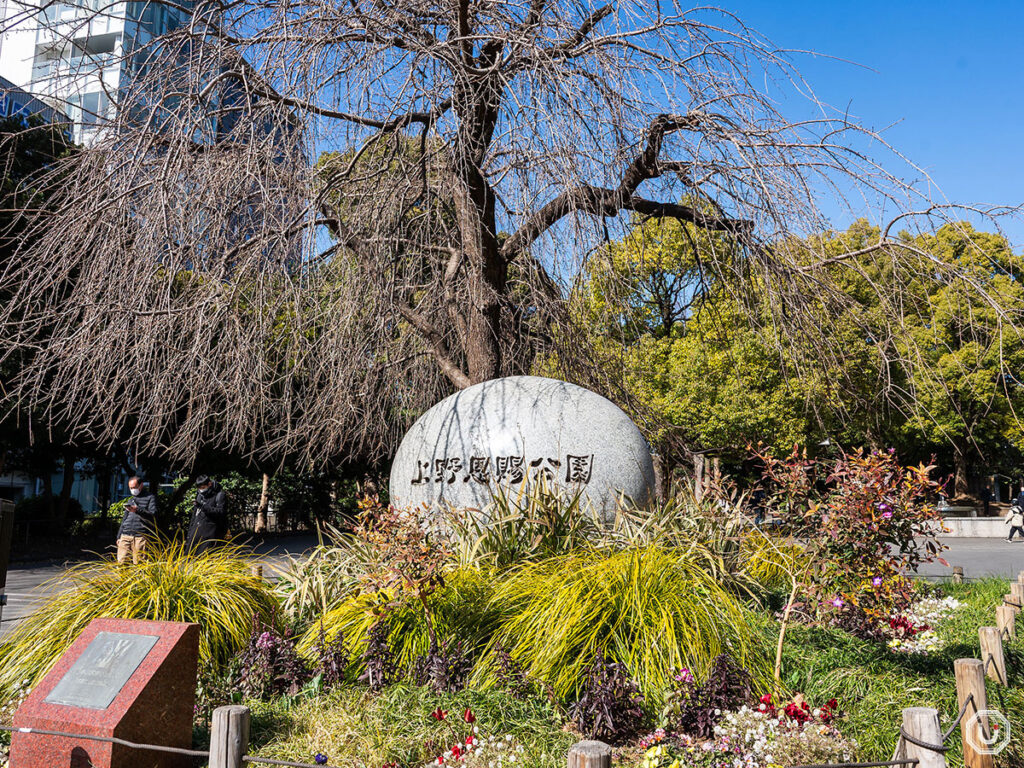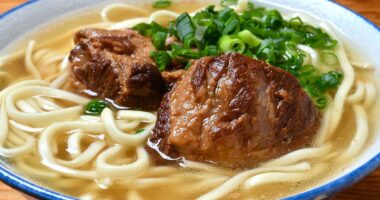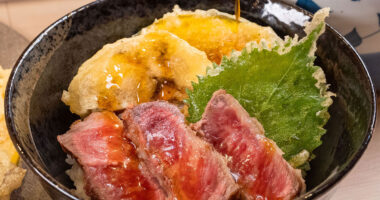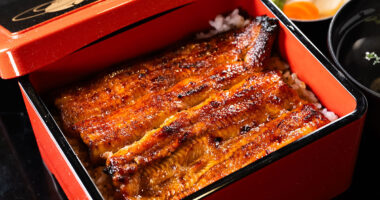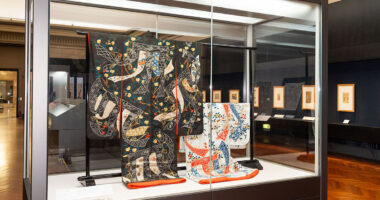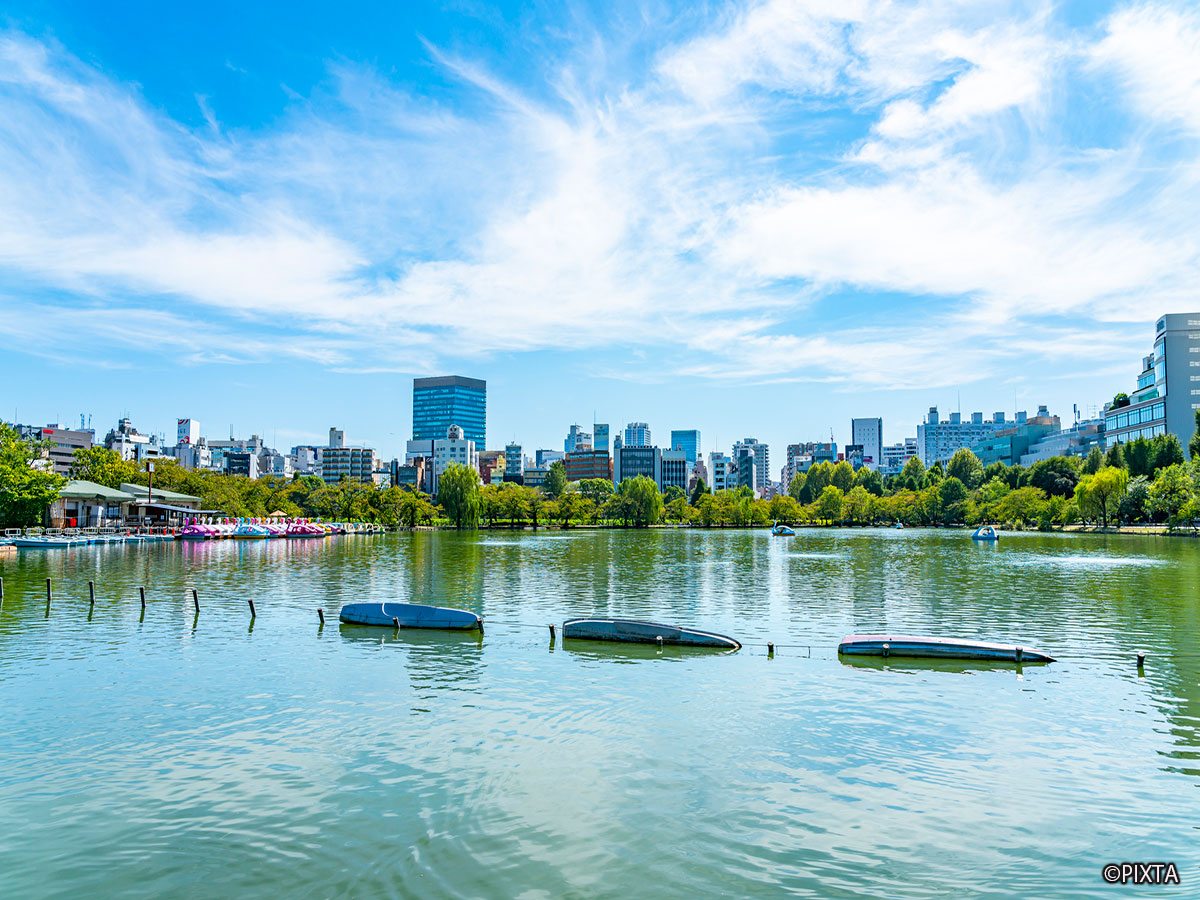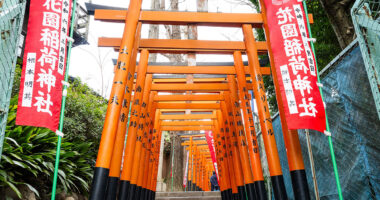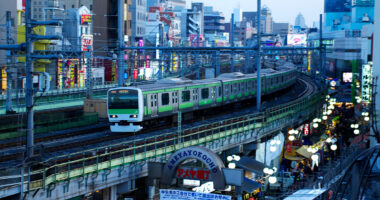Known as one of Japan’s most famous cherry blossom spots, Ueno Park in Tokyo delights visitors when approximately 1,000 cherry trees throughout the park grounds and surrounding areas reach full bloom in spring.
However, Ueno Park is not just a springtime attraction—it’s a destination that offers something year-round. In addition to Ueno Zoo, the park is home to numerous museums and art galleries, as well as temples and shrines where you can experience traditional Japanese culture.

Ueno Park basic info: admission fees and opening hours
Ueno Park (officially known as “Ueno Onshi Park”) has a long history, opening in 1876 as Japan’s first official public park. Because of its hilly terrain, the area was known as “Ueno no Yama” (Ueno Hill) before the park was established, and it was already a popular spot for cherry blossom viewing during Japan’s Edo period.
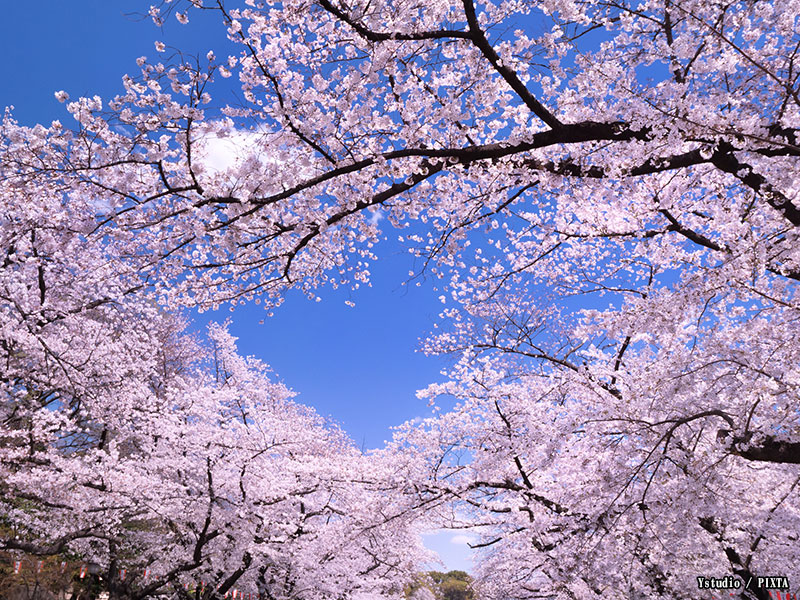
Photo for illustrative purposes
The cultural facilities that have become symbols of Ueno Park—the zoo, art galleries, and museums—were established in the 1870s-1880s. First, the Educational Museum, the predecessor of the National Museum of Nature and Science, opened in 1877.
Following that, in 1882, the museum that would become the Tokyo National Museum relocated from Uchisaiwaichō and opened in Ueno Park that same year.
In 1954, the National Museum of Western Art opened. Due to the presence of Ueno Park with its numerous museums and art galleries, Ueno came to be affectionately known as “The Museum Town.”
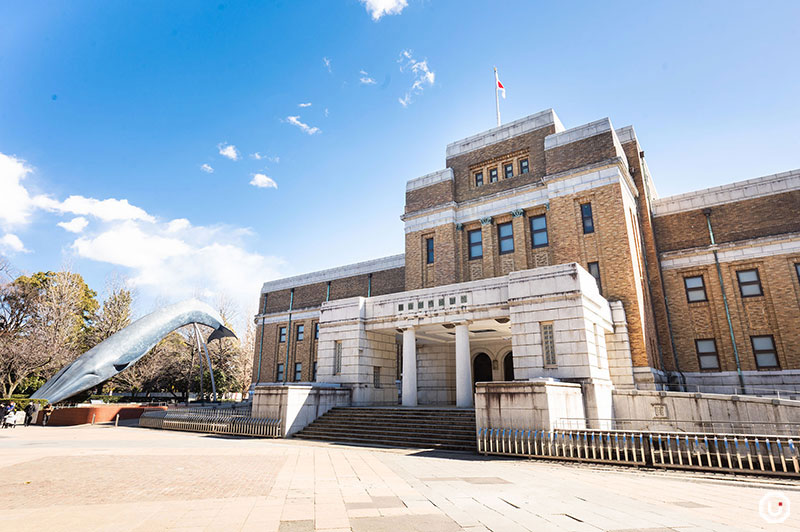
The National Museum of Nature and Science
Ueno Park is full of greenery, and it’s recommended to visit even just for a stroll through the grounds.
With the exception of a few facilities, admission to Ueno Park itself is free, and the park is open 24 hours a day.
You can walk around the entire park in about an hour, and since there are restaurants and cafes, it’s also nice to visit as a rest stop between sightseeing activities.
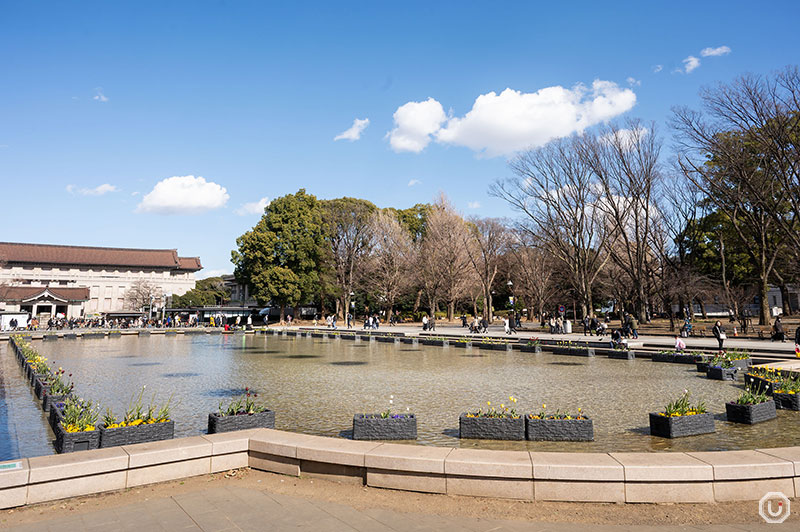
Fountain in Ueno Park
However, if you have the chance, you’ll want to enjoy the paid attractions like Ueno Zoo and the museums and art galleries.
Here are recommended sightseeing routes that will enhance your Ueno experience.
Route 1: a stroll through Japanese art and culture
Because Ueno Park is home to so many museums and art galleries, you can enjoy a stroll that deepens your understanding of Japanese culture.
You’ll also find shrines and temples scattered throughout the park, offering a chance to not only learn about history but also experience the uniquely Japanese aesthetic values embodied in traditional architecture.
Ueno Toshogu Shrine: an ornately designed shrine building
Start your walk at Ueno Toshogu Shrine, located within the park. The shrine buildings, designated as Important Cultural Properties, have a stately presence that speaks to their long history.
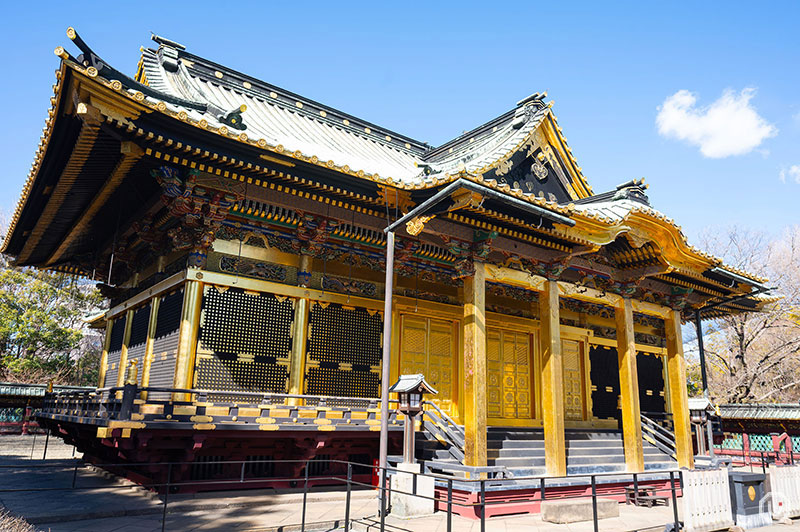
The shrine building of Ueno Toshogu Shrine
In the viewing area, which you can enter by paying an admission fee of 500 JPY for adults and 200 JPY for elementary school students, there are the Karamon (Chinese style gate) and Sukibei Wall, both also designated as Important Cultural Properties, and both well worth seeing (ages 6 to 12).
The detailed decorations on all of these buildings are so exquisite that it wouldn’t be an exaggeration to call them works of art.
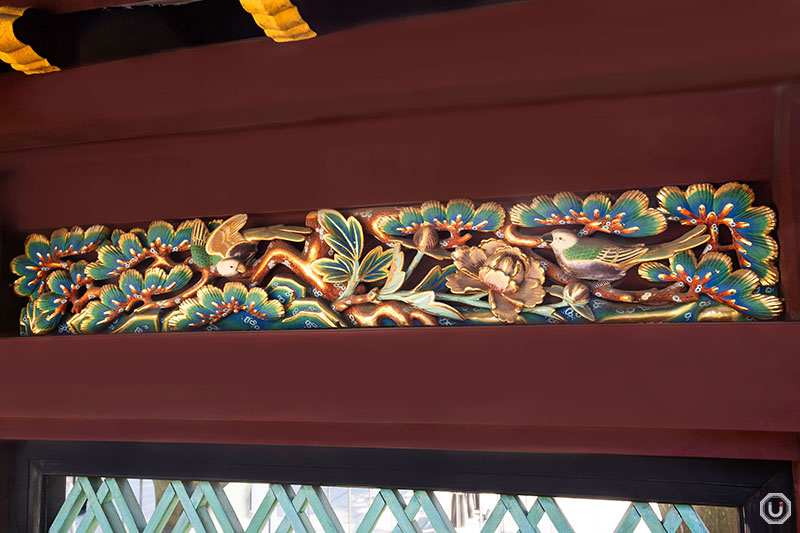
Grounds of Ueno Toshogu Shrine with its many Important Cultural Properties
Within the shrine precincts, you’ll also find a tranquil meditation space where you can experience the Japanese aesthetic of wabi-sabi.
After removing your shoes, take a seat in the meditation space and face the sacred camphor tree of Ueno Toshogu Shrine. You’ll feel a sense of serenity, as though you’re at one with nature.
In contrast to the ornate shrine building, the meditation space embodies a minimalist beauty that reflects Japan’s distinctive appreciation for simplicity and subtlety.
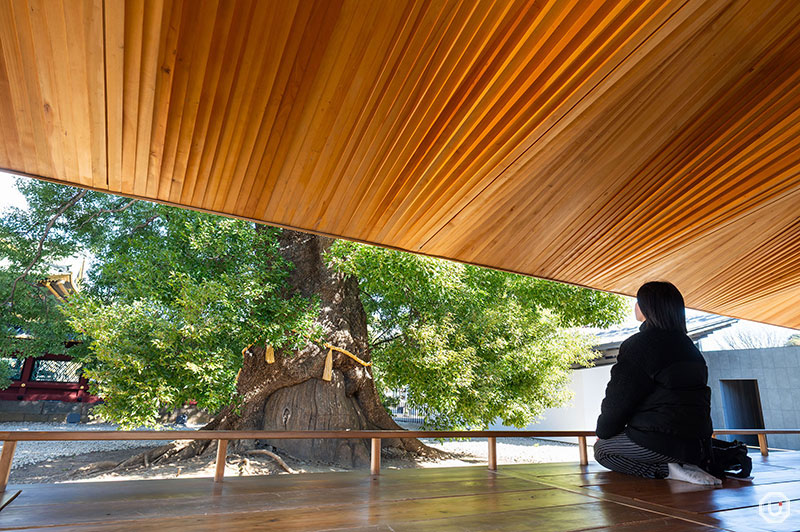
Meditation space at Ueno Toshogu Shrine
| Address | 9-88 Ueno Kōen, Taito-ku, Tokyo |
|---|---|
| Phone number | 03-3822-3455 |
| Visiting Hours | Mar-Sep. 9:00-17:30 Oct-Feb.9:00-16:30 |
| Admission fee | Adults 500 JPY Elementary school students (ages 6 to 12) 200 JPY Groups(20 or more people)400 JPY |
The Tokyo National Museum: Discover Japanese art and archaeological artifacts
After immersing yourself in Japanese culture and aesthetics, head to the Tokyo National Museum, where even more cultural treasures and artworks await.

The main building of the Tokyo National Museum
The Tokyo National Museum houses approximately 120,000 items in its collection. Among these, 89 pieces are designated National Treasures and 650 are Important Cultural Properties, making it one of Japan’s finest collections.
The vast collection is displayed across six different buildings with varying themes, with the Japanese Gallery being particularly recommended. It exhibits Japanese art from the Jomon period through the Edo period.

The Tokyo National Museum frequently rotates its exhibits
The scope of Japanese art is vast.
The Japanese Gallery of the Tokyo National Museum covers all kinds of art, including Buddhist art, ink paintings, folding screens and sliding door paintings, and ukiyo-e prints.
Within the museum grounds, there’s also a traditional tea house built during the Edo period.
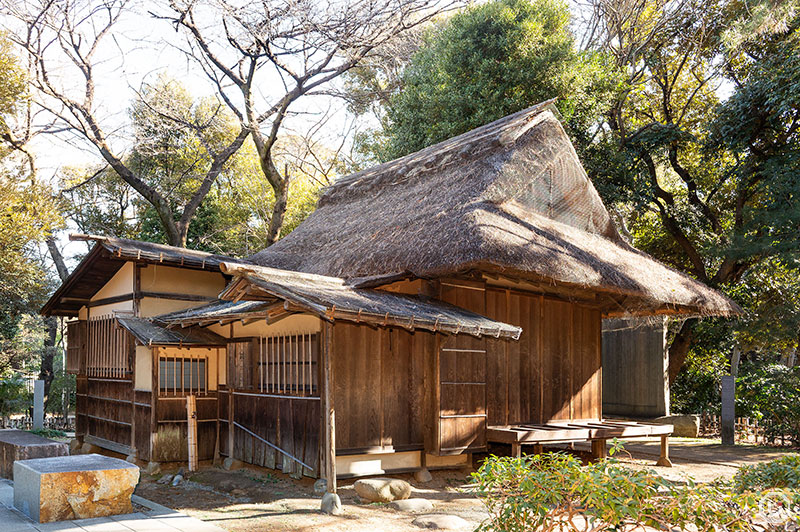
A tea house that can be seen in the Tokyo National Museum garden
By viewing the art pieces in the Japanese Gallery with their accompanying explanations and appreciating traditional Japanese architecture in the garden, you can deepen your understanding of these historical periods.
| Address | 13-9 Ueno Kōen, Taito-ku, Tokyo |
|---|---|
| Phone number | 050-5541-8600(”Hello Dial” general information) |
| Hours | Tues-Thurs. & Sun. 9:30-17:00(last admission is 30 minutes before closing) Fri-Sat. 9:30-20:00(last admission is 30 minutes before closing) *special exhibitions require an additional fee |
| Closed | Monday (or the following day if Monday is a national holiday), New Year’s holidays |
| Admission fee | General admission 1000 JPY University students 500 JPY Free for high school students and younger, as well as those under 18 and 70 or older *special exhibitions require an additional fee |
Route 2: a learning-focused tour that sparks curiosity
One of the appeals of Ueno Park is its array of facilities that can be enjoyed by people of all ages, from children to adults.
Route 2 features educational and curiosity-stimulating spots and is especially recommended for animal lovers. Whether you’re exploring solo or with family, this route offers a fun and informative experience.
Ueno Zoo: encounter animals from Africa to native Japanese species
One of Ueno Park’s most iconic facilities is Ueno Zoo (officially known as “Ueno Zoological Gardens”). Approximately 3,000 animals of about 300 species live at Ueno Zoo.
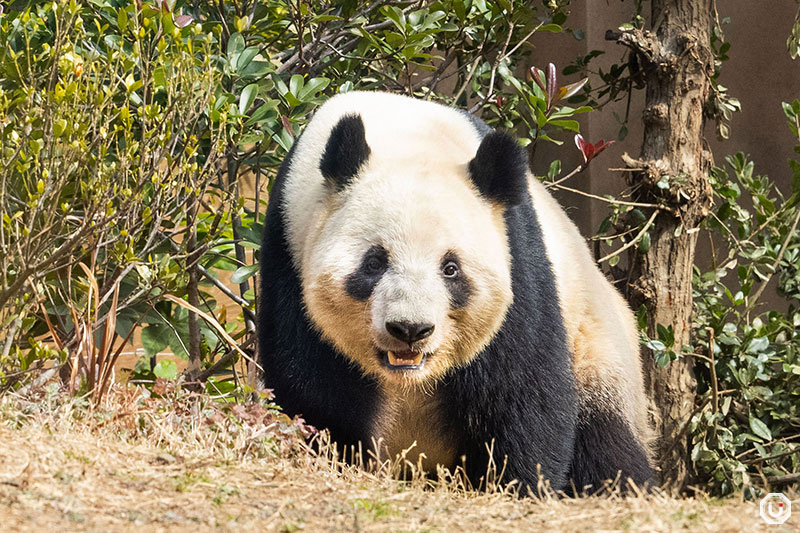
Lei lei, a giant panda at Ueno Zoo
Among them, the giant panda is the zoo’s star attraction and a beloved symbol of the park.
You’ll even find panda-themed benches and mailboxes scattered throughout Ueno Park!
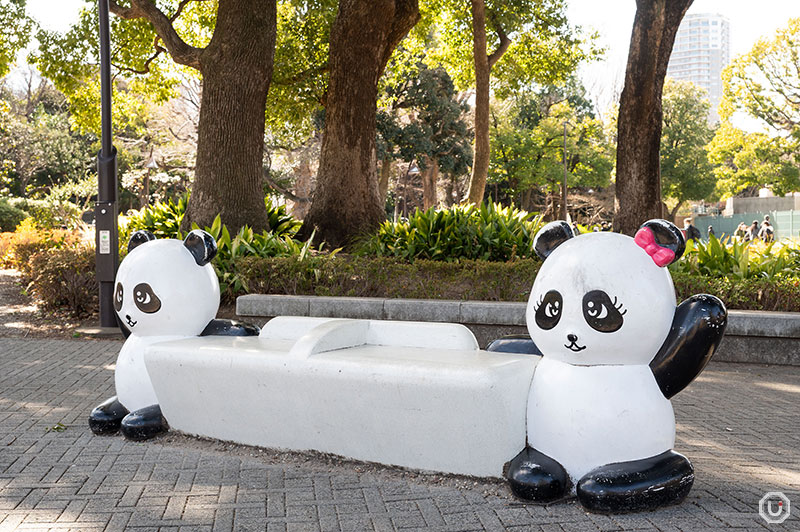
Bench installed near Ueno Zoo’s main entrance
Ueno Zoo emphasizes “animal welfare” as a core part of its efforts to improve the animals’ quality of life. Both their care and exhibition practices are designed with the animals’ well-being in mind.
For example, gorillas are social animals that live in groups. At Ueno Zoo, a family of seven gorillas—including a mother, her children, and their aunt—live together in an environment that allows them to spend time as a family 24 hours a day.
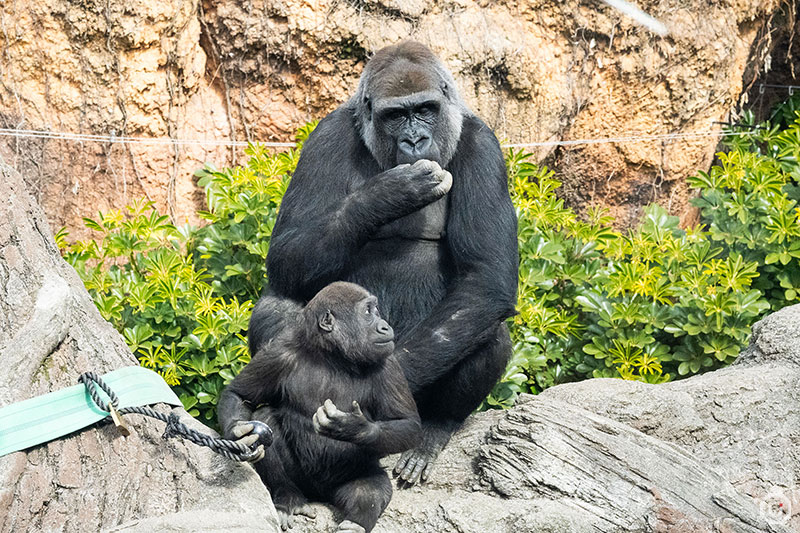
A group of gorillas at Ueno Zoo
There is also what’s called a mixed exhibit, where multiple animal species are displayed in the same area.
One such exhibit features Japanese serow and Ezo sika deer.
Different animals coexisting in the same environment reflects how things should be in the wild. With this setup, visitors can observe the animals’ natural behavior and interaction.
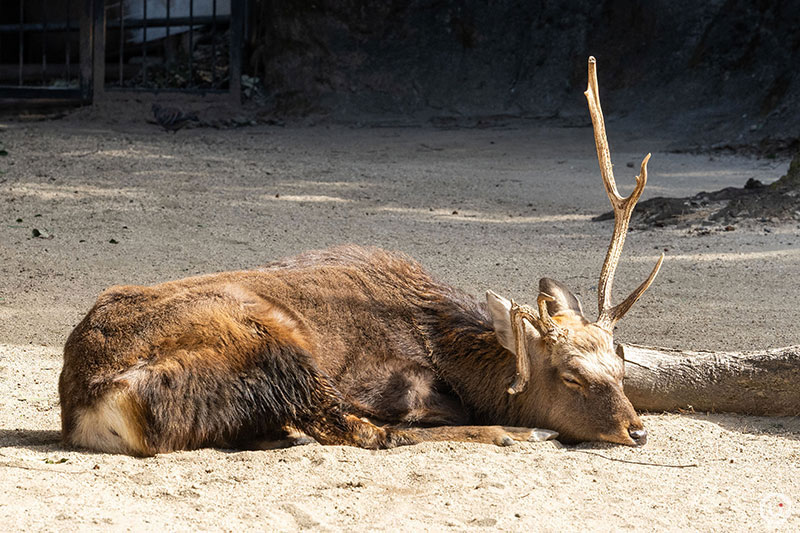
The zoo also features native Japanese species on display
| Address | 9-83 Ueno Kōen, Taito-ku, Tokyo |
|---|---|
| Phone number | 03-3828-5171 |
| Hours | 9:30-17:00 *Tickets are available for purchase until 16:00 |
| Monday | Monday (or the following day if Monday is a national holiday), New Year’s holidays(12/29-1/1) |
| Admission fee | Adults 600 JPY 65-years-old and over 300 JPY Junior high school students (ages 13 to 15) 200 JPY Free for 12 years and younger |
The National Museum of Nature and Science: a deeper look at animal ecology
The National Museum of Nature and Science consists of two buildings, the Japan Gallery and the Global Gallery, displaying approximately 25,000 specimens and materials.
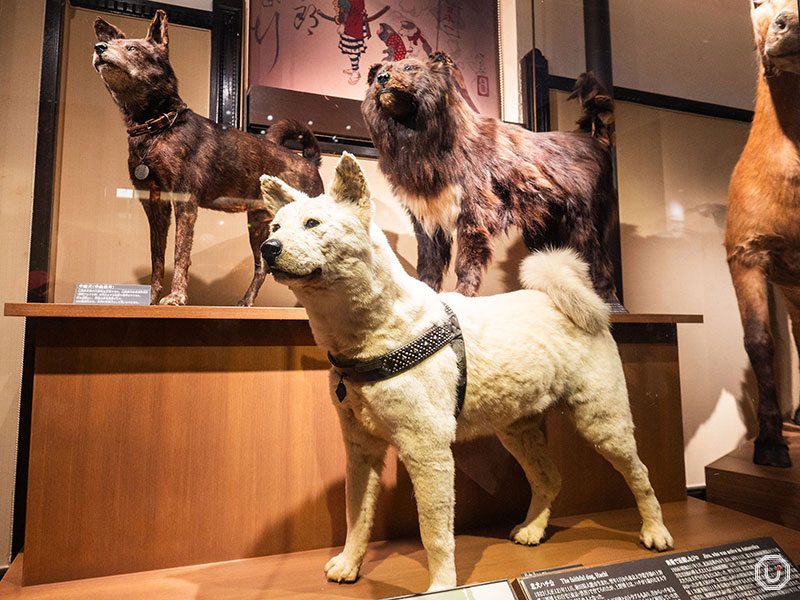
Taxidermy display of the actual Hachiko, the faithful dog, at the museum
Among the impressive exhibits, the Global Gallery is particularly noteworthy.
Here, you’ll find a wide array of mammal and bird taxidermy specimens, accompanied by detailed explanations about their behavior and ecology, helping deepen your understanding of animal life.
That’s why it’s highly recommended to visit this museum alongside Ueno Zoo. You can observe animals living in their habitat at Ueno Zoo, then expand your knowledge at the National Museum of Nature and Science, creating a comprehensive learning experience.
The museum also features dinosaur skeleton reconstructions, as well as exhibits on natural history, science and technology, making it a great destination for anyone curious about more than just animals.

Numerous highlights including reconstructed dinosaur skeletons
| Address | 7-20 Ueno Kōen, Taito-ku, Tokyo |
|---|---|
| Phone number | 050-5541-8600(”Hello Dial” general information) |
| Hours | 9:00-17:00(last admission is 30 minutes before closing) *opening hours for special exhibitions should be checked on each exhibition’s official website |
| Closed | Monday (or the following day if Monday is a national holiday), New Year’s holidays |
| Admission fee | General admission/adults 630 JPY Free for high school students (including technical college students) up to the first March 31 after turning 18 and those 65 and older *special exhibitions require an additional fee |
Route 3: a spiritual stroll for good fortune
Before Ueno Park was established, the entire area was the grounds of Kan’ei-ji Temple.
At its peak, the temple grounds were said to be twice the size of today’s Ueno Park—an immense area steeped in history
However, after the Boshin War (specifically the Battle of Ueno), many of its buildings were lost. The temple’s land was also confiscated and partially returned by the Meiji government, leading to the complex history we see today.
Route 3 is a tour that visits temples and shrines associated with Kan’ei-ji Temple while offering the prospect of good fortune and blessings!
Shinobazunoike Bentendou Temple: blessings for wealth
Standing on an island in Shinobazu Pond, Shinobazunoike Bentendou Temple is one of the remaining structures from Kan’ei-ji’s original temple complex. It was built by Jigen Daishi (Tenkai), the high priest who founded the temple.
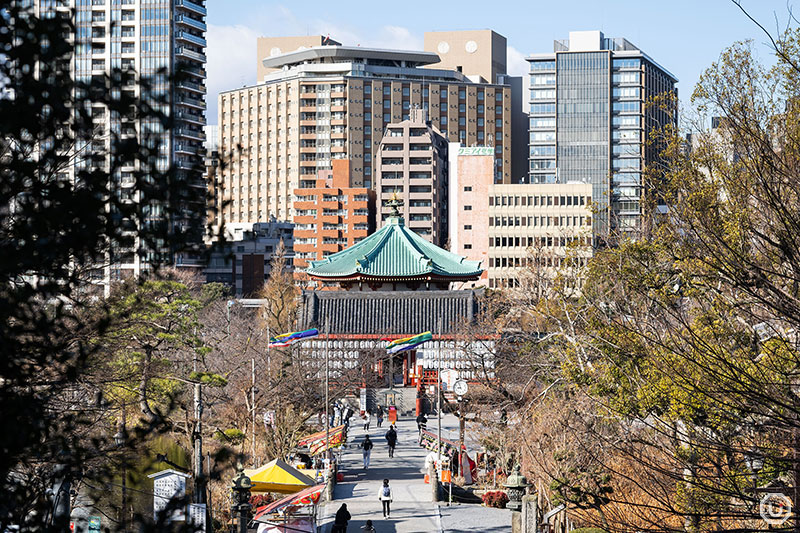
Shinobazunoike Bentendou Temple
The deity enshrined here is Benzaiten, the guardian deity of music and performing arts, who is also believed to bring improved financial fortune.
Daikokuten is also enshrined here, and legend has it that Toyotomi Hideyoshi, a great general who was active during the Warring States period, deeply revered this deity.
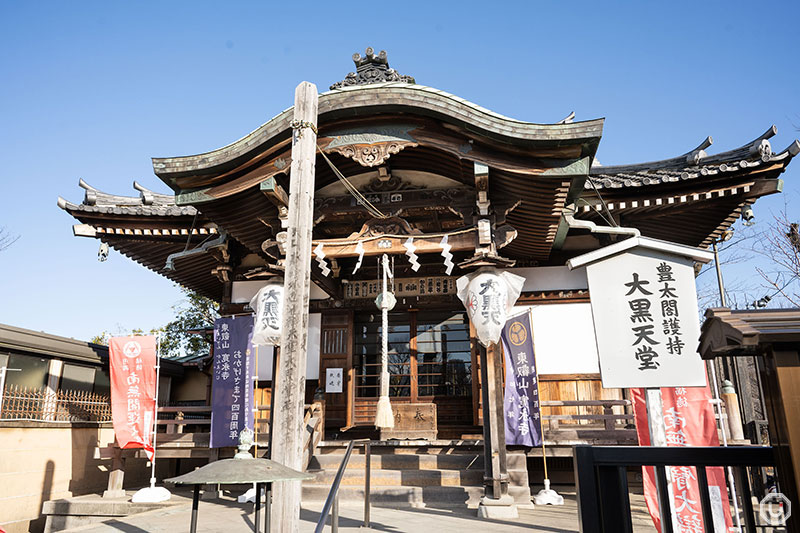
Shaka Temple (Daikokuten) where Daikokuten is enshrined
After paying your respects, you may want to pick up an omamori (amulets available at Japanese shrines and temples that grant good luck or protection. Given the temple’s history, you’ll want to get one related to improved financial success.
Every September, Shinobazunoike Bentendou Temple also holds the Minarukane Grand Festival, during which you can receive special, limited-edition charms.
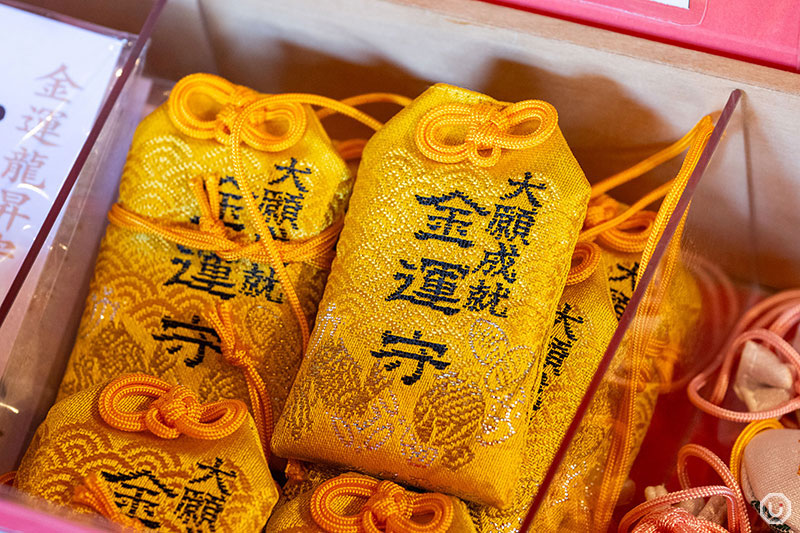
Omamori
| Address | 2-1 Ueno Kōen, Taito-ku, Tokyo |
|---|---|
| Phone number | 03-3821-4638 |
| Visiting Hours | 9:00-17:00 |
| Admission fee | Free |
Ueno Toshogu Shrine
Located within Ueno Park, the abovementioned Ueno Toshogu Shrine is another sacred site with deep ties to Kan’ei-ji Temple.
Originally built as part of Kan’ei-ji Temple complex, it was later separated and re-established as an independent shrine.
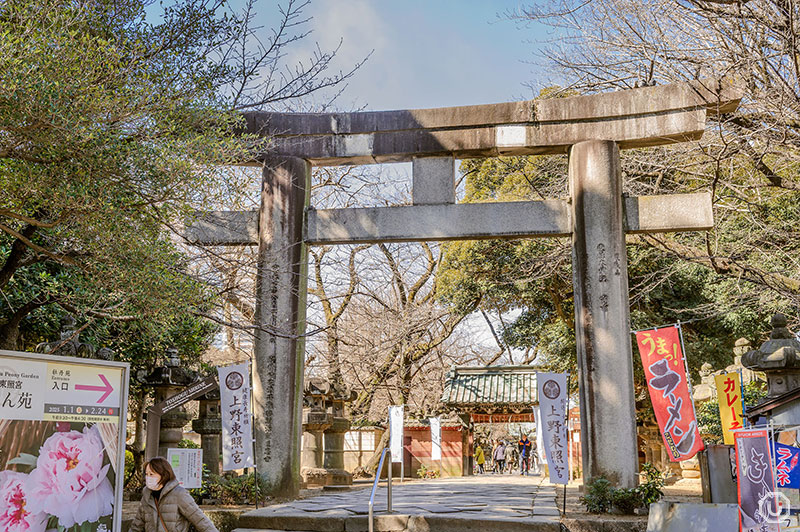
Torii gate at Ueno Toshogu Shrine
At Ueno Toshogu Shrine, with its impressive golden architecture, visitors can pray for career advancement, good luck in competition, and health.
In addition to various omamori for matchmaking and family safety, the “Shōryū Mamori” (Rising Dragon Amulet) is distributed for three days each month on the 16th, 17th, and 18th.
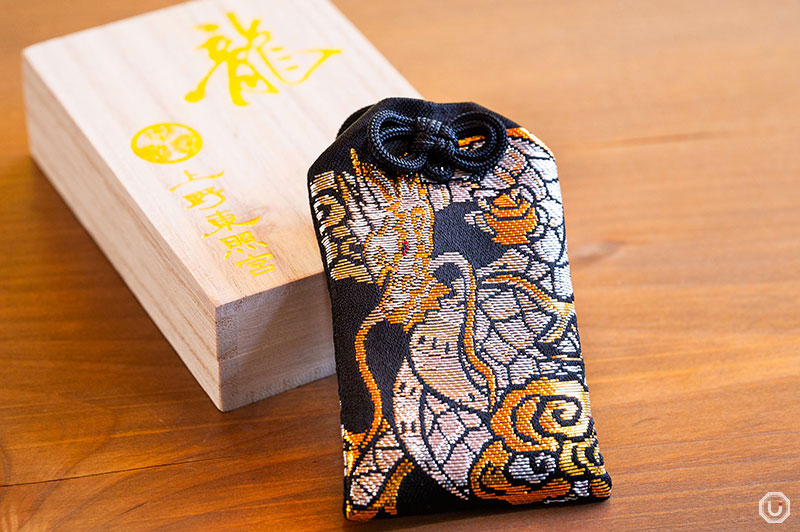
Shoryu Mamori
| Address | 9-88 Ueno Kōen, Taito-ku, Tokyo |
|---|---|
| Phone number | 03-3822-3455 |
| Visiting Hours | Mar-Sep. 9:00-17:30 Oct-Feb. 9:00-16:30 |
| Admission fee | Adults 500 JPY Elementary school students (ages 6 to 12) 200 JPY Groups(20 or more people)400 JPY |
